A crisis sweeping America is working a job with no sense of purpose.
Satisfaction is reasonable at 65% of U.S. workers (ZIPPIA, 6/28/22).
But passion is low at only 20%.
“Work is of two kinds: first, altering the position of matter at or near the earth’s surface relative to other matter; second, telling other people to do so.” Bertrand Russell
Many folks are successful at work but struggle without purpose.
Even more, retire without purpose.
Recently, I was fascinated by an artist in the 19th century who struggled with the same thing.
James Tissot painted high-society Paris during the age of Impressionism and mentored well-known artists like Degas. He was immensely talented and successful.
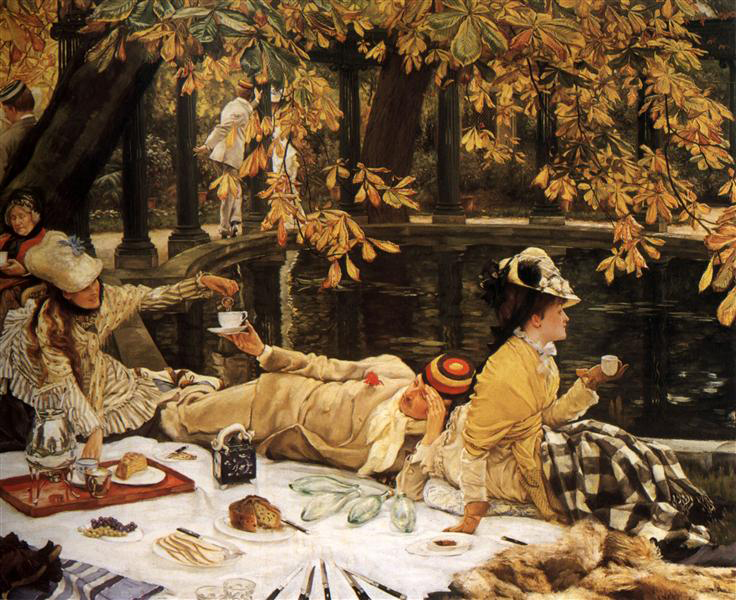
But, something was lacking.
Restless and wanting more, Tissot left Paris for London in 1871.
Remarkable success followed with displays in . . .
- the Arts Club
- the Royal Academy
- Vanity Fair magazine
Purpose source #1: Suffering
Tissot mixed with the beau monde in London, welcoming guests to his St John’s Wood home.
He made works that reveled in the eccentricities of the upper class, like Too Early, 1873, in which he depicts the oddity of being among the first guests to arrive at a party.
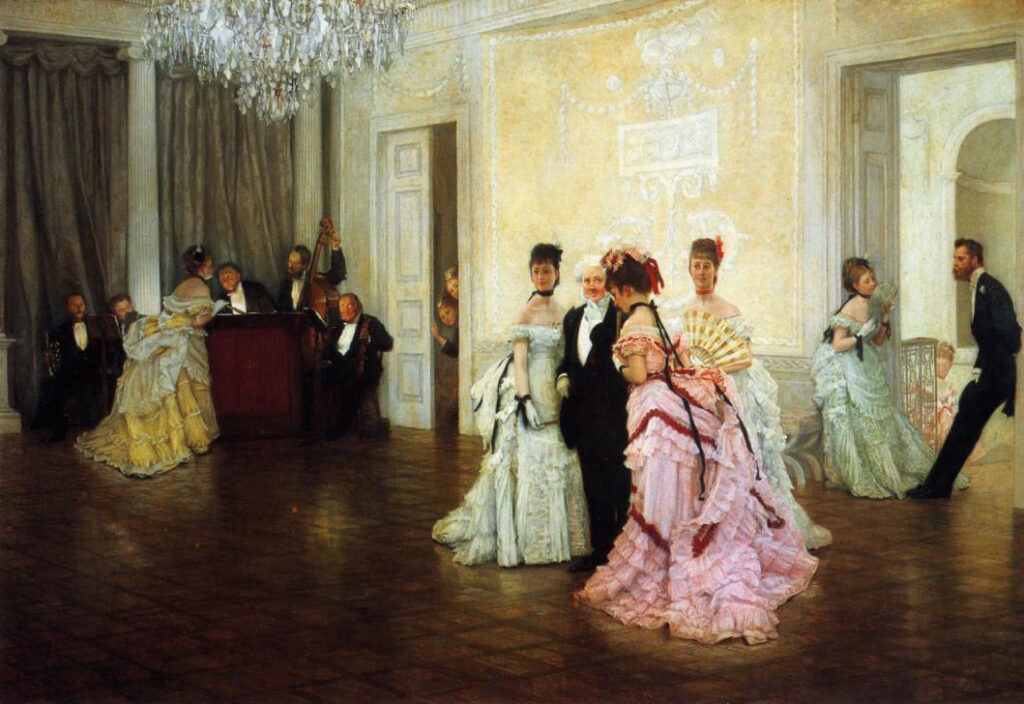
“It’s so very relevant today with these social codes and cues. And because he’s a French artist looking at a different society and culture, he can make some of those observations in a way that an insider might not be able to get away with so easily.” Melissa Buron, Director Fine Arts Museum San Francisco
Tissot was on the pinnacle of success, or so he thought.
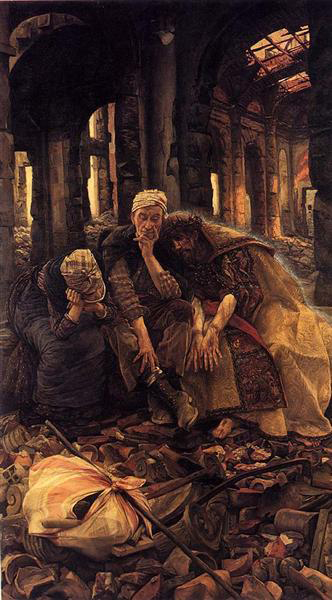
But, in 1882, the love of his life, Kathleen Newton died, and he returned to Paris.
Looking for a new direction, he planned a series of paintings in various settings around Paris.
He wanted to sketch a woman in worship using the Church of Saint-Sulpice.
Something else happened.
At the high point of the mass, when the priest raised the host, Tissot envisioned Jesus comforting two people in wrecked quarters.
Purpose source #2: Experience a value
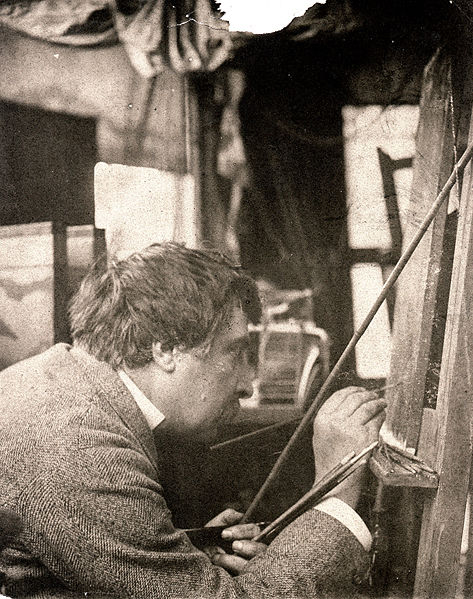
Deeply moved, he returned to his studio and worked on a painting for two days and nights without sleep. The result . . . “Inward Voices, The Ruins” (above).
Tissot unexpectedly finds a new motive for his art from what Victor Frankl calls the three triggers for purpose.
” . . . we can discover meaning in life three different ways: 1. by suffering; 2. by experiencing a value; and 3. by doing a deed.” Victor Frankl
First, Tissot’s suffering seeded his heart for the vision.
Next, his purpose was lit by “experiencing a value,” his faith in Christ.
Finally, his deeds unfolded in a commitment to illustrate the Gospels through his art.
Purpose source #3: Do a deed
He travels to Syria, Egypt, and Israel.
- study 1st century history
- sketch landscapes
- interview rabbis
Over ten years, Tissot has painted 270 watercolors, a series called “The Life of Christ.”
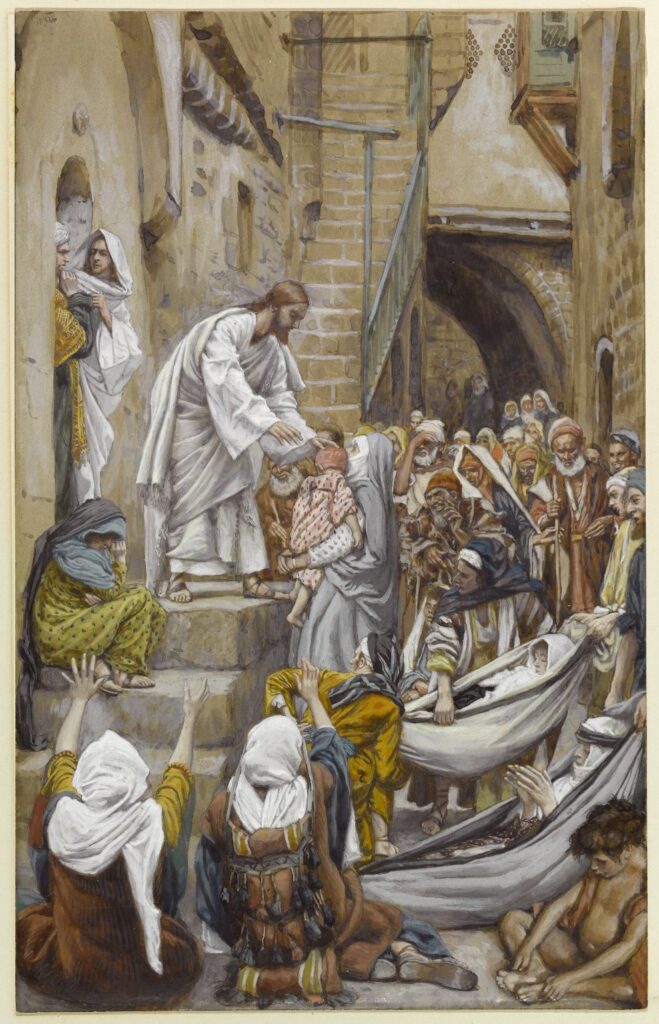
In 1894, he displayed them at the Paris Salon to widespread acclaim.
“Men reverently doffed their hats; women wept and knelt before the pictures, and some even crawled like penitents through the show. Two years later, the profusely illustrated Tissot Bible was published and became an international best seller.” Ken Johnson, The New York Times, 12/17/2009
By 1896, the watercolors totaled 350, from Christ’s birth to his resurrection.
Tissot’s attention to minutia is arresting and achieves a journalistic “you are there” experience.
“The paintings are like stills from a Hollywood spectacular.” Ken Johnson, The New York Times, 12/17/2009
He aimed to bring a high level of cultural and historical precision into his paintings rather than the anachronisms habitually used by other artists.
The Brooklyn Museum purchased the “Life of Christ” series for $60,000 in 1900.
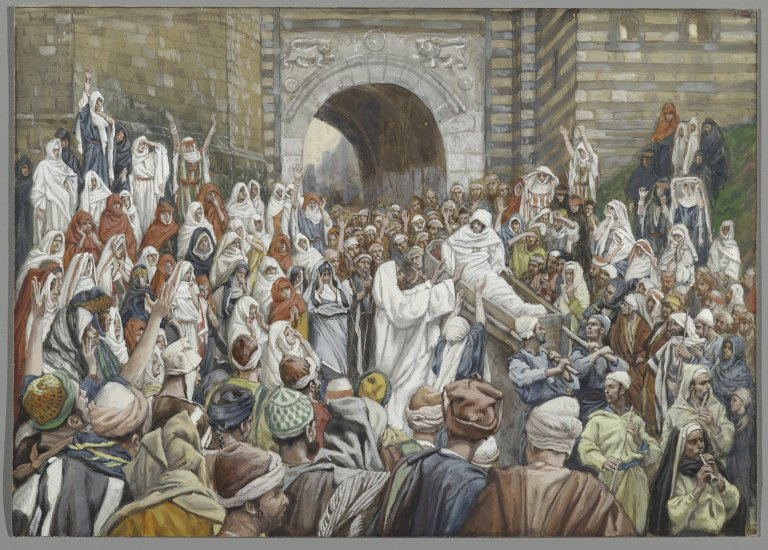
While enjoying the holidays, how might the life of this French artist encourage . . .

Thanks for sharing this with me. I really appreciate this style of art and the power of the messages integrated within it.
Thanks for sharing this compliment Aaron. It means a lot coming from a Professor in advanced photography and digital imaging.
My son-in-law and I were just talking about suffering and meaning at Thanksgiving. Going to forward this excellent piece to him. Thanks Steve
Thank you for sharing that Jeff. I wish you and your family new and refreshing encouragement this holiday season.